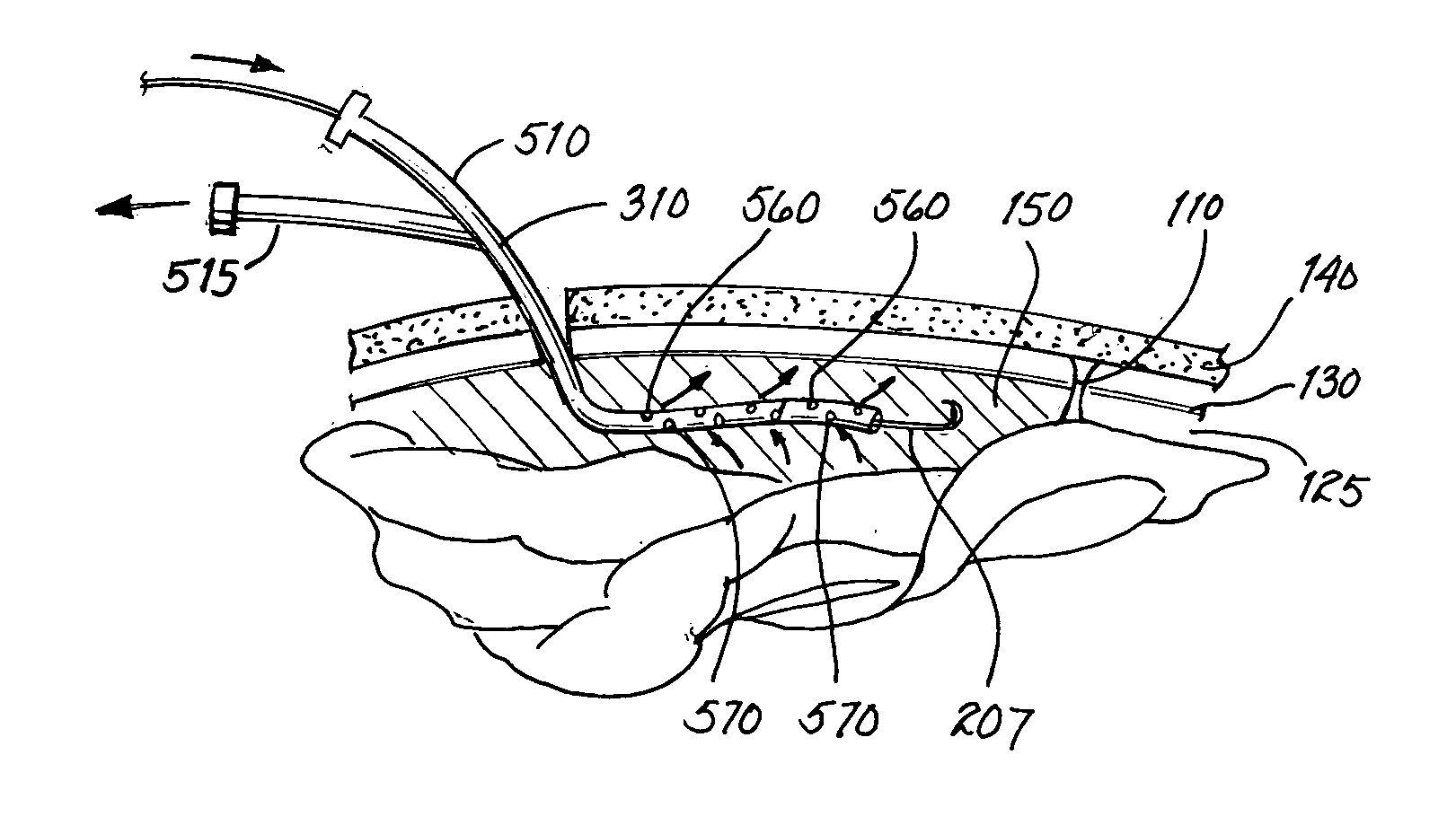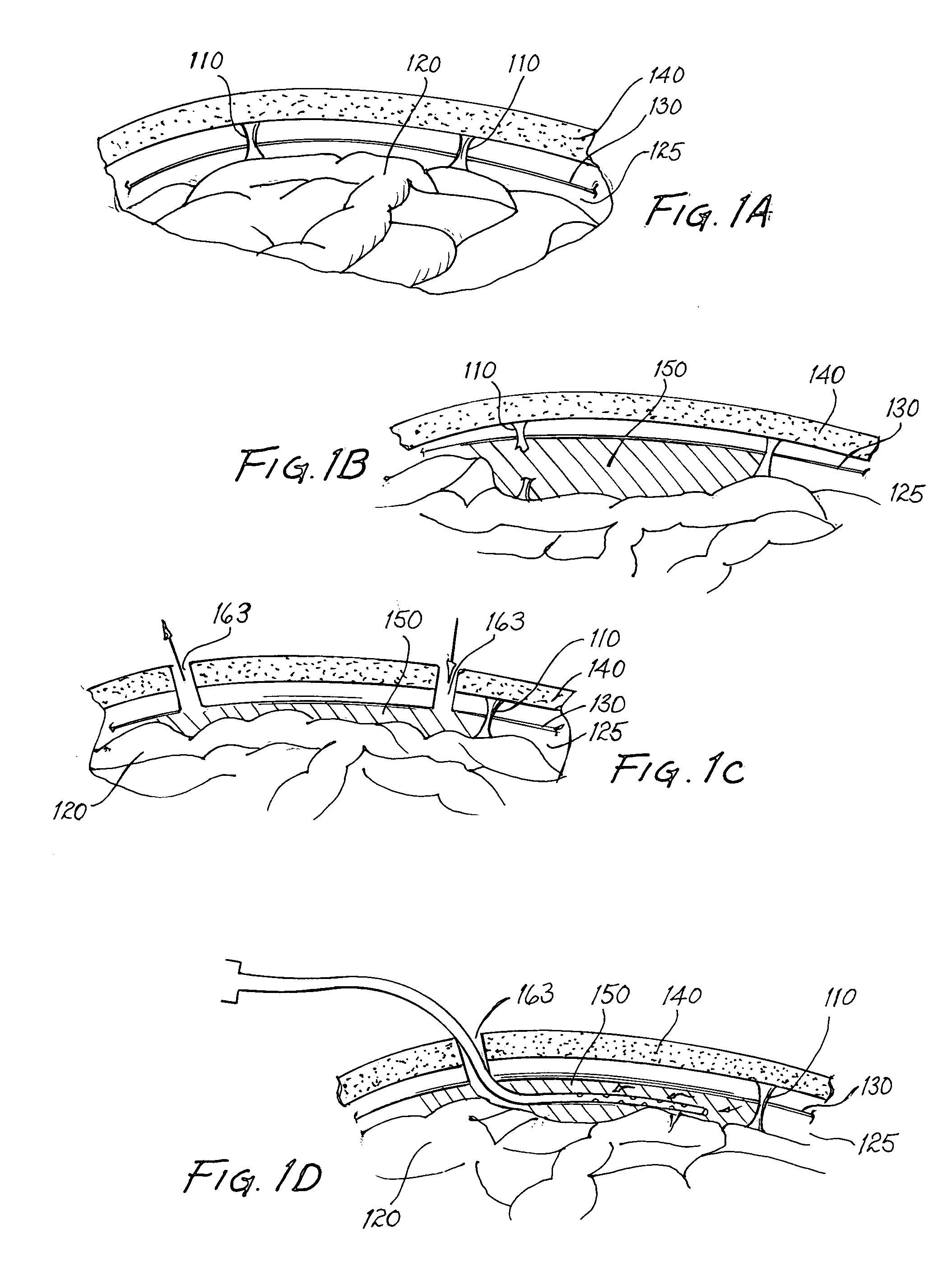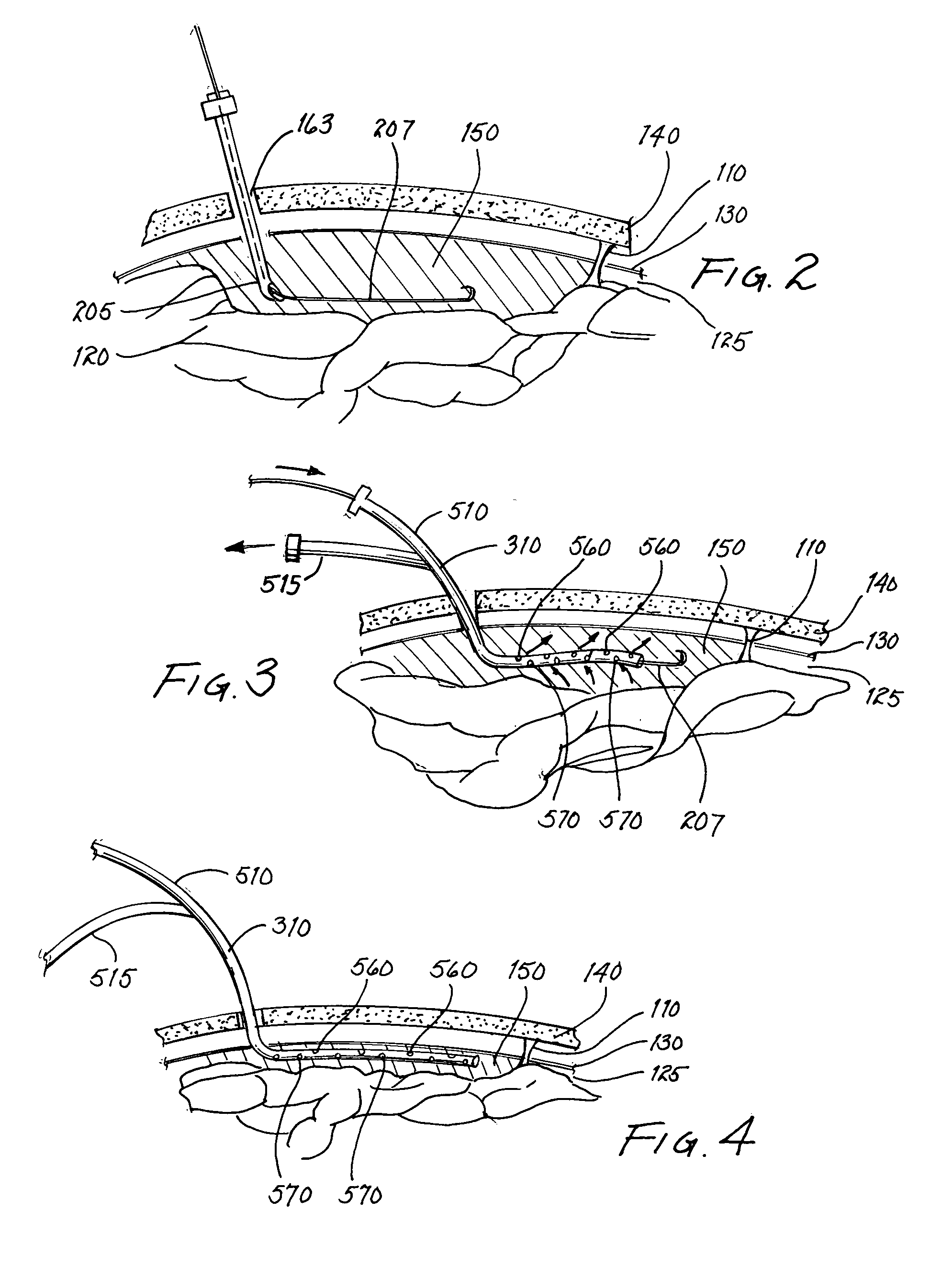Method and apparatus for irrigation and drainage of the brain's subdural space using a percutaneous approach
a percutaneous approach and subdural space technology, applied in the field of medical devices and procedures, can solve the problems of inability to effectively wash out coagulation products, inability to irrigate the subdural space 125/b>, and traumatic head injuries
- Summary
- Abstract
- Description
- Claims
- Application Information
AI Technical Summary
Benefits of technology
Problems solved by technology
Method used
Image
Examples
Embodiment Construction
[0012] In accordance with one embodiment of the present invention, an apparatus for use in medical procedures for treating subdural hematomas is disclosed, comprising a dual lumen catheter comprising, in combination, a drainage channel having a proximal portion and a distal portion, and an irrigation channel having a proximal portion and a distal portion.
[0013] In accordance with another embodiment of the present invention, a method for treating subdural hematomas is disclosed, comprising, in combination, the steps of: inserting a dual lumen catheter into a subdural space, draining the subdural space of a subdural fluid collection with the dual lumen catheter, and irrigating the subdural space using the dual lumen catheter.
[0014] In accordance with yet another embodiment of the present invention, a dual lumen catheter is disclosed, the dual lumen catheter comprising, in combination, means for drainage and means for irrigation.
BRIEF DESCRIPTION OF THE DRAWINGS
[0015]FIG. 1A is a si...
PUM
 Login to View More
Login to View More Abstract
Description
Claims
Application Information
 Login to View More
Login to View More - R&D
- Intellectual Property
- Life Sciences
- Materials
- Tech Scout
- Unparalleled Data Quality
- Higher Quality Content
- 60% Fewer Hallucinations
Browse by: Latest US Patents, China's latest patents, Technical Efficacy Thesaurus, Application Domain, Technology Topic, Popular Technical Reports.
© 2025 PatSnap. All rights reserved.Legal|Privacy policy|Modern Slavery Act Transparency Statement|Sitemap|About US| Contact US: help@patsnap.com



